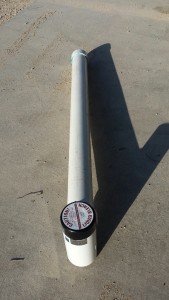For service call (210) 890-2778
or click here to request service
Liquid Chlorinators: An Alternative to Using Chlorine Tabs

Aerobic Systems and Tablet Chlorinators
Aerobic systems rely heavily on free oxygen because bacteria uses the oxygen to treat wastewater. Trash tanks break down paper and waste, much like the standard septic tank. Although, instead of liquids traveling from the trash tank straight into the soil (like standard septic tanks), they go into a separate aerobic treatment unit before spraying onto the lawn.
Aerobic systems use chlorinators to disinfect treated wastewater before it is distributed through the spray heads. Here is the issue: tablet chlorinators can cause problems. Swelling and moisture wastes tabs, and they are susceptible to clogging, costing you more out of your pocket to call in a service technician to unclog. While many systems use these chlorine tablets, there is an alternative: liquid chlorinators.
Save Time, Save Money

Liquid chlorinators use household bleach and are newer to the industry. The chlorinator reservoir uses a venture to siphon bleach into the pump tank. If your system has tablet chlorinator, it can usually be retrofitted with a liquid chlorinator. There is an upfront cost to the installation, but bleach is much less expensive than tablets. Depending on how long you plan to live in your home, the upfront cost may reduce your long-term cost for the tabs.
If you are interested in having a tablet chlorinator installed on your Clearstream aerobic system, we are happy to provide you with an estimate. Give us a call at 210.698.2000 (San Antonio) or 830.249.4000 (Boerne/Hill Country).

I would like some more information and cost to retrofit my system to liquid bleach system.
JW
JW,
I am happy to provide you with the information you requested. I e-mailed you the pricing and information. I’m happy to help if you need anything else.
I’ve had a liquid chlorinator for almost 5 years. It worked well for the first 4, dispensing about 1 quart per person per week. A year ago it stopped dispensing anything. My service provider worker on it several times and it started dispensing its entire content every day, about 3.5 gallons. The service provider worked on it some more and it stopped working altogether again. They replaced the chlorinator and have worked on it twice since and it still won’t dispense. Are all liquid chlorinators more of a maintenance problem than the passive tablets? Do you recommend tablet systems over the liquid systems? If not, why?
I’ll start by saying there is no part to an aerobic system that is 100% flawless. There are many types of liquid chlorinators; in generally they are usually much less problematic than tablet chlorinators. First of all, tablets for treating wastewater can be pricy, so liquid chlorinators are much less expensive for the chlorine they use. Also, tablet chlorinators can easily get clogged up with mush tabs. I’d say about 1% of the liquid chlorinators we service have the same problem you are describing. Sometimes, the valve can only be turned “open or close”, again, every set up is a little different. Has your provider sent out a different tech? Maybe a different set of eyes on it may have an idea to a resolution.
i am interested in converting my septic system to a liquid chlorination system. what do i need to be aware of.
While liquid chlorinators are more user friendly and less costly for the chlorine (household bleach), there are occasions where a chlorinator might leak or the valve may need to be adjusted so it will siphon the correct amount of chlorine. The occurrence of this is rare but possible, and are usually easily fixed depending on the type of liquid chlorinator you get.
I moved in to a new home and pulled the cap off to add bleach and noticed the thin clear tube is bent in half and shoved down in the middle tube in the chlorinator. Is that the correct setup? Not exactly sure how these work and if they need to be adjusted to dispense the right amount of bleach? Thanks!
Sorry for the delayed response. There are so many types of chlorinators, its hard to say. But, “bent in half” doesn’t sound right. Have you monitored the chlorine level to see if its taking bleach?